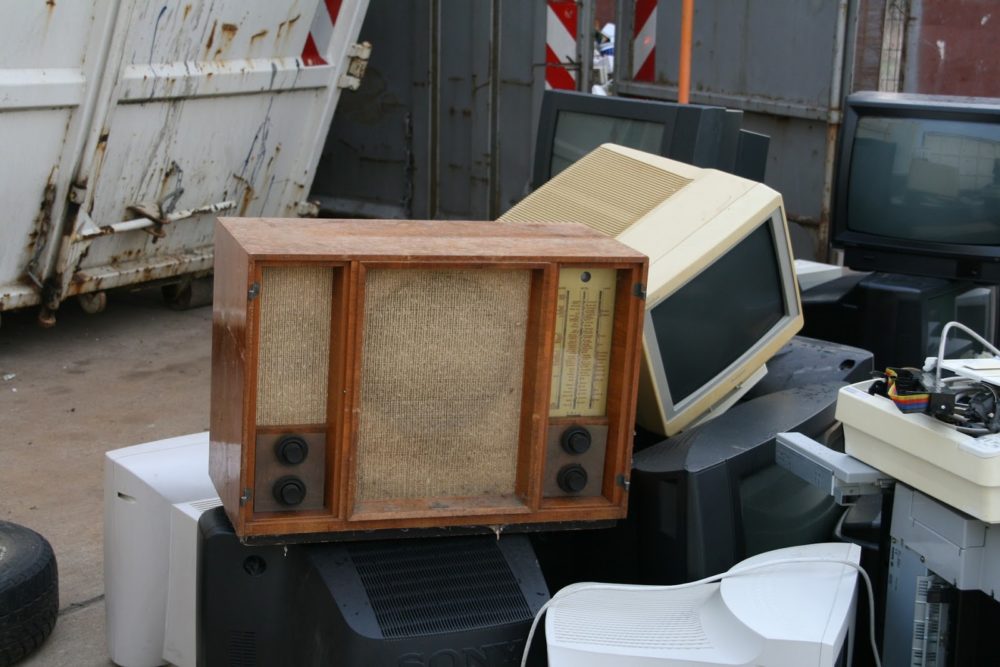Depending on where you live, your decision to recycle all your used and unwanted electronics can have significant environmental and economic impacts. In fact, recycling e-waste can help the environment.
Keeping used electronic devices away from your community landfill makes a huge and long-lasting contribution to the health and well-being of your community. Used electronics contain toxic chemicals, which, if not recycled or disposed of properly, can contaminate soil and groundwater.
Recycling e-waste can also help create jobs and pump money into the local economy through the fast-growing recycling industry.
Did you also know that if you help promote the recycling of e-waste and encourage more people around the globe to do the same, your contributions to this green movement can accomplish something else: it can improve the fate of the gorilla population in the Democratic Republic of the Congo.
That’s right, recycling e-waste can help the environment in significant and broad-reaching ways.
A new study by the University of South Australia has linked the rising amount of e-waste to the decline in the gorilla populations, reinforcing the notion that recycling e-waste can help the environment and dramatically impact the natural world.
And this study helps support the idea that those impacts are much more widely felt than we initially assumed.
How has E-Waste Been Linked to Wild Animals?

Researchers have known for a while that e-waste poses a risk to the environment, and it isn’t just the health of people that researchers are concerned about. We also know that if toxic chemicals like mercury and lead seep out of the used smartphones, laptops and other devices once we toss them into the trash and send them to a landfill, it’s also the wildlife in the area that can be impacted.
And this is a major concern in part because the amount of e-waste that’s being discarded globally keeps skyrocketing, as the number of consumers who own multiple devices increases as well. It’s the massive volume of e-waste being generated that’s convinced even the United Nations to make a serious push to increase recycling rates worldwide.
Now a new study out of Australia has sent up a rather unique red flag, noting that the failure to recycle discarded phones and other e-waste is contributing to the dramatic decline in gorilla populations in the Congo. And increased recycling rates for e-waste would help reverse that. Since much of the electronics we use today require rare minerals and metals, much of the gorilla habitats are in danger of being destroyed for the search and acquisition of these minerals and metals.
The study, conducted by conservation psychologist and great ape expert Carla Litchfield notes that if metals primarily used in the production of electronic devices are recovered from old mobile phones and recycled, there would be less incentive to mine gorilla habitats for those same minerals.
Litchfield noted that for every 30-40 mobile phones that get recycled, one gram of gold can be recovered. Every time that happens, it decreases the need for a gorilla habitat to be mined to get new metals. In particular, the researchers cite what they call “conflict” metals in e-waste, such as gold and coltan. Those are commonly used in the production of tantalum capacitors for electronic devices. Without recycling those metals from older unwanted devices, which helps cell phone manufacturers get the metals they need, gorilla habitats will continue to be vulnerable to mining, which destroys the areas they live in.
Litchfield also pointed out that the amount of gold content in smartphones is increasing, even though the natural resources of gold could start to run out by 2030. Until then, unless recycling rates increase and dumping rates decrease, there is a lot of continued damage that can be done to the natural habitat for wild animals like the gorilla. The study from Australia backs up research by the U.S.-based activist group Enough Project, which has been urging companies using those minerals to use only recycled materials.
And Enough Project is also working to draw attention to how a reluctance among consumers to recycle discarded phones has contributed to the destruction of the gorilla habitats.
One of the reasons why this study came out of Australia is because researchers have been working with Zoos Victoria, an organization working to fight extinction and save endangered species. They have a program, now in its 6th year, titled “They’re Calling On You,” which promotes mobile phone recycling. It’s part of a national campaign operating across Australian zoos, where zoo visitors were educated about the value of recycling discarded phones.
Those visitors are taught how the simple act of recycling can help save the habitat of endangered species. It was noted primatologist Jane Goodall who first launched a national mobile recycling campaign at Melbourne Zoo in 2009 to educate visitors about the link between mining in the Democratic Republic of the Congo and how mobile phone recycling helps prevent the destruction of gorilla habitats.
Since 2008, Zoos Victoria has collected more than 164,000 old mobile phones for recycling. And now they’re on a mission to educate as many people as possible about how recycling e-waste can have a dramatic impact on the subject of their study.
How Can American Consumers Help?

The researchers say they’re concerned not only about used electronics that are being sent to landfills but they’re also concerned about used electronics that are being hoarded. Electronic hoarders are consumers who decide to replace their used electronics but don’t throw them away or recycle them, instead, they simply leave them in a closet or desk drawer.
That’s just as problematic, the researchers note, since the precious metals within them are not getting extracted by recyclers and returned to the circular economy. As is the case when electronics are discarded, that creates an increased need to mine for those precious metals in wilderness areas.
Today, more than seven billion mobile phones are estimated to be in service globally and as manufacturers rush to upgrade those phones with new and more sophisticated features, it’s expected that more than a billion older phones will be retired and replaced. The researchers and the advocates at Zoos Victoria are working to help raise recycling rates, so those phones do not end up en masse in landfills.
They also want to ensure they don’t get pulled from circulation entirely, where the precious metals within them get wasted.
Today, we know that the annual sales of mobile phones and computers account for about 4% of gold and silver, and about 20% of cobalt and palladium being mined globally. By taking your used smartphones and other electronics to an experienced recycling firm like Great Lakes Electronics Corporation, you can help put those precious metals back into circulation for manufacturers and help reduce the need to continue mining for virgin ore to get new metals.
In fact, the United Nations is now working with governments and mobile phone manufacturers to establish certified ‘DRC conflict-free’ trading chains to help reverse the negative impact of e-waste on the gorilla habitat.
And there is an economic incentive to this as well. The high value of gold, platinum, silver and palladium from mobile phones means that recycling used electronics for individual parts helps manufacturers get a resource they need, at a lower cost – savings that can be passed on to consumers.
The Australian study dramatically shows the strong link between the rise of electronic telecommunication devices and the decline of the Eastern Lowland Gorilla species within the Democratic Republic of the Congo. A global effort to reverse that begins with educating consumers on the need to increase recycling rates for electronic devices, with people in every country playing a role.
In Australia, Zoos Victoria runs environmental education programs and community conservation campaigns to fight human-induced threats to wildlife. Now, by collecting any unwanted electronic devices you have, and taking them to a recycler like Great Lakes Electronics Corporation, you can help them in that mission.
Conclusion
It’s important for all of us to continue raising awareness about the risks to the habitat of endangered species from the growing amount of e-waste.
What’s needed is a continued investment in a proven solution to e-waste: recycling, which remains the most effective way to keep e-waste from damaging our environment and our health.
It’s a message we all need to keep repeating, and it’s also important for everyone to take their unwanted electronics to a proven recycling firm like Great Lakes Electronics Corporation.
The company has a great reputation for being trusted experts in the recycling and management of waste electronics and other metals. The unwanted equipment brought to Great Lakes Electronics Corporation is recycled in a responsible, environmentally conscious way.
Great Lakes Electronics Corporation serves customers both large and small, from private customers to large corporations. Contact them today at 888-392-7831 to request a quote.

